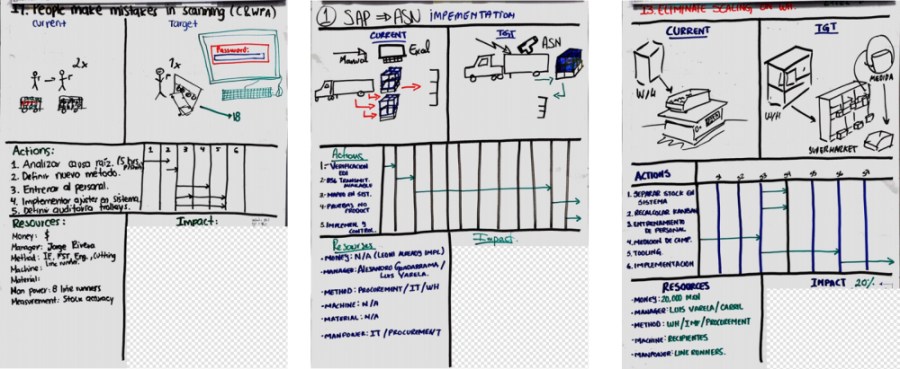Increasing efficiency by optimising an automotive supplier’s shop floor
How in a short time can several plants in different countries be uniformly assessed and potential savings identified and implemented? That’s a tricky task that requires special measures.
Industry
Automotive supplier
Challenge
An automotive supplier operates more than ten plants throughout the world, all of which are of different sizes and organised in different ways and have to work within a country-specific context. Potential savings tailored to the specific situation were sought. In conjunction with plant teams, BLSG was tasked with finding out how the operations of the individual plants could be optimised and with developing appropriate implementation plans. Having all team members identify with the results was particularly important in the integrative approach taken in operationalising a transformation project.
Solution
The key to resolving these complex tasks is the Deep Dive program. Independently developed by BLSG, it is particularly suitable for determining and evaluating potentials for improvement. To this end, for a period of two weeks each of the teams in the plants were supported by the experience and expertise of BLSG directly on site. To meet the challenges of each plant on site, all Deep Dive workshops follow a uniform format, supplemented by a focus on technical aspects. At each location, an interdisciplinary plant team led by two BLSG consultants worked through the three steps of the Deep Dive program:
- An analysis of the current state by mapping the value stream and lean qualification of the plant team.
- Identification of weaknesses and potentials for improvement
- Development of a target value stream as well as the development and evaluation of measures
Step 1 consists in mapping out the value stream of a reference product. This involves depicting the complete flow of production and materials from goods receipt to goods issue. All members of the team thus acquire a uniform understanding of the processes and their interaction within their plant. This is the basis for step 2, the identification of potentials for improvement.

Example result: Mapping of the value stream
These potentials for improvement are determined jointly with local process experts. The BLSG team contributes its well-rounded outside perspective, providing qualified feedback, professional guidance and assistance. Every process step and department is reviewed and everyone in the team and every perspective are included.
Step 3 initially consists of developing a shared vision, the target value stream. Everyone involved should get a concrete picture of the overall goal that the individual changes ultimately serve. Then comes the development of the appropriate measures to achieve the target value stream. Our action posters are the ideal instrument for this process, clearly presenting the current and target status of each problem. Process phases and milestones describe the path from the current to the target state, ensuring a level of commitment from the outset. There are two crucial questions to be answered: 1. What are the impacts that can be expected from the various measures? 2. What resources does this require? Here too, plant teams are guided and supported by BLSG experts with specific expertise, effective methods and tools.

Example result: Action posters
Result
In Deep Dive workshops, a number of new optimisation measures were developed for every plant, which, depending on the size of the plant, resulted in savings of between several hundred thousand and several million euros. The overall potential company-wide was able to be determined, which is now used as a basis for sales and liquidity planning. In addition, Deep Dive’s benchmarking feature includes laying the foundation for footprint decisions. And what’s more, this program allows the most diverse stakeholders to be actively involved in improvement measures at any time. A win-win situation for everyone, because continuous improvement in performance also ensures the company’s long-term competitiveness.

